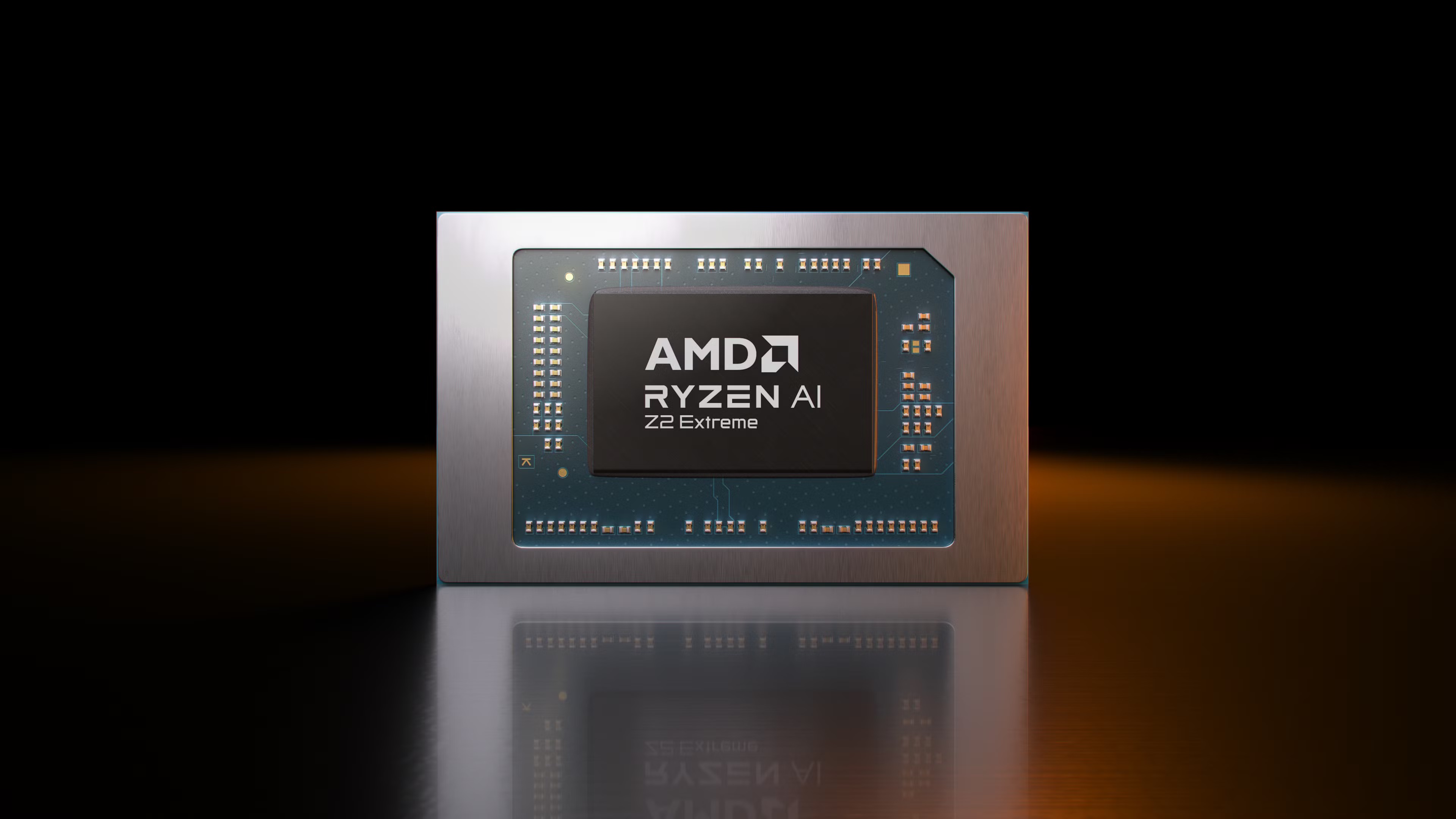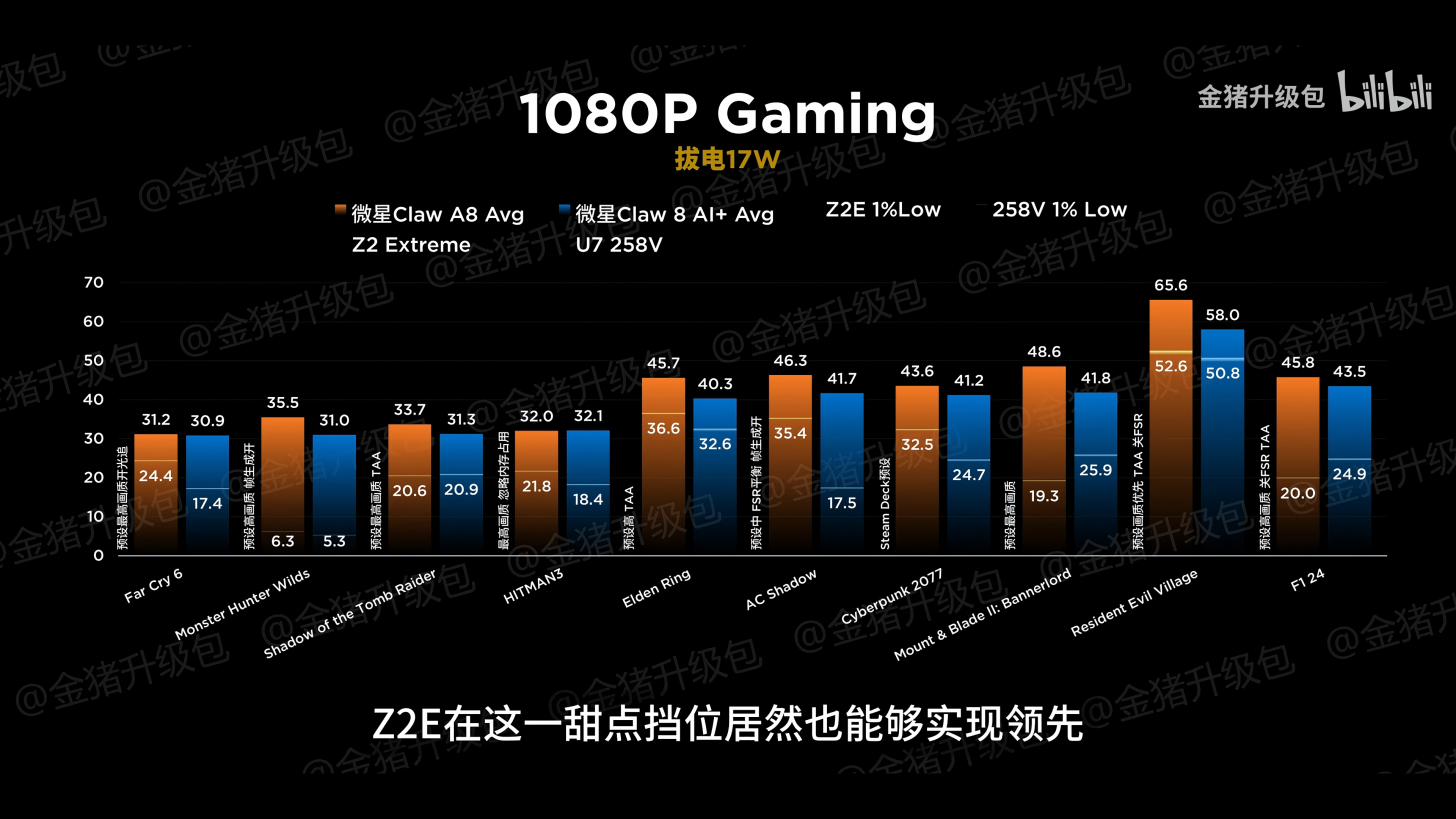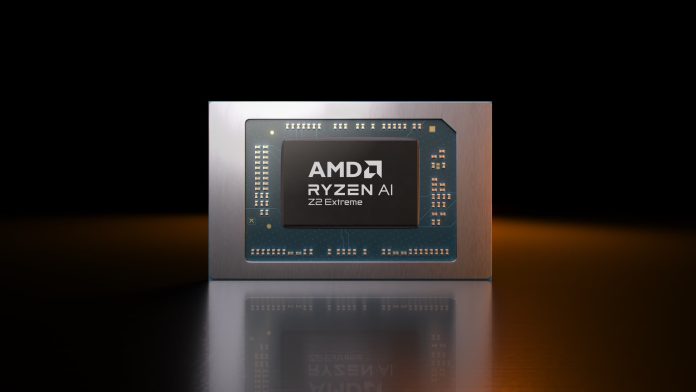
We’ve seen plenty of power-versus-performance battles in the handheld gaming space, and the newest one pits two classic rivals against each other. Spotted first by HXL, MSI Claw A8, powered by AMD’s new Ryzen Z2 Extreme, went head-to-head with the Claw 8 AI+ running Intel’s Core Ultra 7 258V. Both chips were tested at different power limits, including the all-important 17-watt range that defines efficiency for handhelds. The Z2 Extreme didn’t just compete—it pulled ahead.
AMD Ryzen Z2 Extreme@17W (MSI Claw A8)vsIntel Core Ultra 7 258V@17W (MSI Claw 8 AI+)https://t.co/dN3oqGzzCX pic.twitter.com/JNmPJHCkjsAugust 3, 2025
Handheld PCs live and die by efficiency, and since both here cost roughly the same—between $900 and $1,000—this comes down to performance-per-watt. At 17 watts, you’re in that delicate balance where the SoC needs to deliver smooth gameplay without torching the battery. Historically, Intel dominated this zone, while AMD’s previous APUs, like the Ryzen 7 8845HS, struggled badly when the power budget dropped below 20 watts. Those parts were designed for laptops, not handhelds (like the Z1 Extreme), and it showed, but according to the review, there’s a new sheriff in town now.
The Ryzen Z2 Extreme is AMD’s top-tier handheld SoC, an eight-core, sixteen-thread design based on Zen 5, with three performance cores and five efficiency cores running up to 5.0 GHz. It pairs that with sixteen RDNA 3.5 compute units—effectively a Radeon 890M-class GPU—on TSMC’s 4nm process, and supports LPDDR5X-8000 memory. The power envelope ranges from 15W to 35W. However, this chip relies upon external memory mounted on the device’s PCB, so the device should track the power consumption of the onboard memory separately.
Intel’s Core Ultra 7 258V, built on TSMC’s N3B node, also features a hybrid core layout and uses Xe2 graphics (Arc-based), but the design targets slightly lower TDP ceilings and has fewer customization options for OEMs. This chip has memory fused to the chip package, so the power consumption metrics for this chip tend to include the memory power consumption, as well.
It is unclear if the reviewer accounted for the fact that Lunar Lake’s 17W power envelope encompasses its onboard memory while the Ryzen Z2 Extreme does not, meaning the latter could be pulling more power overall.

The testing started with a power-efficiency curve to see how performance scales with wattage. At just 10 watts, the Z2 Extreme was already hitting over 20 FPS in the GR Extreme benchmark—an 80 percent uplift over last year’s Z1 Extreme, which barely managed 11.5 FPS under the same condition. That alone set the tone, but there was a quirk. Under the default power configuration—where FPPT, SPPT, and SPL were all equal—the performance curve behaved strangely after 30 watts. Frame rates began to regress instead of improving.
For context, FPPT stands for Fast Package Power Tracking, SPPT is Slow Package Power Tracking, and SPL is the sustained power limit. These define how much power the SoC can pull for short boosts and for steady workloads. If they’re all set to the same value, the CPU can grab more power than it needs, starving the GPU. That’s exactly what happened here, so the fix was simple: lock SPPT to 48 watts. This short boost only lasts five seconds, so it doesn’t really affect battery life. Once adjusted, the curve normalized—but the real surprise came at 17 watts.
The showdown moved to real-world games at 1080p with both chips capped at 17 watts and it’s safe to say the numbers were telling:
Swipe to scroll horizontally
|
Game (1080p, 17W Limit) |
AMD Ryzen Z2 Extreme (FPS) |
Intel Core Ultra 7 258V (FPS) |
|---|---|---|
|
Monster Hunter Wilds |
31.8 |
25.7 |
|
Cyberpunk 2077 |
43.6 |
41.7 |
|
Resident Evil Village |
65.6 |
58.0 |
|
Far Cry 6 |
31.2 |
30.9 |
|
Average Lead |
+8.5% in favor of AMD |
It’s not just the averages that matter here either, AMD had stronger 1% lows, meaning the gameplay felt smoother overall. The reviewer admitted it outright: “I have to apologize. I was too loud before—I didn’t understand mobile SoCs, and I didn’t understand AMD.”
Moving on, at higher power targets of around 30 watts, the gap closed but didn’t disappear. AMD still held about a 6% advantage on average, with Intel picking up wins in a few games. This back-and-forth was expected because Z2 Extreme’s scaling flattens out after 20 watts; once you hit that point, throwing more power at it doesn’t translate into big gains. Intel, meanwhile, gets more benefit from the extra headroom than AMD does, though not enough to take the crown.
Swipe to scroll horizontally
|
Specification |
AMD Ryzen Z2 Extreme |
Intel Core Ultra 7 258V |
|---|---|---|
|
Architecture |
3x Zen 5 P-cores + 5x Zen 5c E-cores |
4x Lion Cove P-cores + 4x Skymont E-cores |
|
GPU |
16 RDNA 3.5 Compute Units |
8 Xe2 cores (Arc 140V) |
|
Process Node |
TSMC 4nm |
TSMC N3B |
|
Memory Support |
LPDDR5X-8000 |
LPDDR5X-8533 (MSI Claw 8 AI+) |
|
TDP Range |
15W – 35W |
7W – 30W |
This is an important development, and it matters so much because it reverses what we’ve seen from the Red Team for years. AMD’s architectural changes—hybrid cores, RDNA 3.5 graphics, and that 4nm process—make the Z2 Extreme a monster under 20 watts. Intel still fights back at ultra-low power levels like 10 watts, so in strict battery-saver mode, Lunar Lake could still have an edge. For the majority of users playing at 15 to 20 watts, though, AMD finally appears to have the upper hand — at least it does if the power measurements for Lunar Lake aren’t also inclusive of its onboard memory, which would give the Z2 Extreme an unfair advantage.
There’s also a useful optimization for those who want extra efficiency: locking all threads to the smaller efficiency cores can improve performance by around ten percent at lower power levels, as shown in the tests. This means AMD now performs better in the range that matters most, while Intel’s Lunar Lake still holds an advantage in very low-power or idle scenarios.
If you’re deciding between the MSI Claw A8 and the Claw 8 AI+, both priced similarly, the Z2 Extreme version offers stronger GPU performance and more consistent frame pacing. With a higher TDP ceiling of 35W, it also gives you extra headroom when plugged in.
